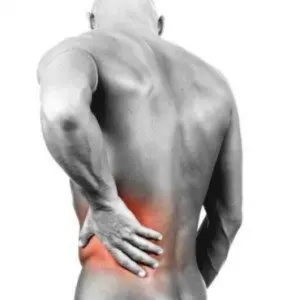
Chronic Non-Specific Low Back Pain – Control Impairment
Patients who suffer more than three months of low back pain diagnosed; with “non-specific” chronic low back pain (NSCLBP), regardless of the radiological findings.
It is not uncommon for these patients to find that the initial diagnosis; may no longer be what’s causing their low back pain.

Patients with NSCLBP who do not have the ability to move their lower back independently, without moving other parts of their body are said to be ‘control-impaired’.
This ‘control impairment’ or inability to isolate the body’s movement leads to mechanical faults, which eventually causes more loading and compression of the joints resulting in pain.
Imagine if your back is stiff and it feels like just one part of the back is supporting all the stress when you move, how much better will it feel when the back is ironed-out and relaxed?
Typically, patients complain of pain when performing the following movements:
- Movement through range
- Static loading tasks such as standing or sitting without support
- Repetitive strain to end of range both in static and dynamic positions
Patients with“non-specific” chronic low back pain have lost the awareness of their body’s position in space (proprioception) and tend to adopt positions that increase stress on the tissues. To aggravate matters, the lack of control prevents them from moving into a position that alleviates the pain.
What are some of the signs we are looking for?
- Chronic pain (low back pain) of more than 3 months with/without an initial radiological finding e.g slipped disc injury
- Localised pain with or without referred pain, such as shooting or pulling pain down the legs
- Gradual onset of pain from repeated or sustained strain, such as lifting or standing for long periods
- Lack of awareness of what causes the onset of pain
- No impaired movement in the direction of pain
- Fear and avoidance of activity that brings on pain
How can physiotherapy help Chronic Low Back Pain?
Patients with “control impairment” disorder typically take a longer time of rehabilitation due to the nature of the disorder. A lot of time required to alter the motor control to help offload the painful joints and tissues involved.
Your physiotherapists will design a motor control programme that aims to change the behaviour of the muscles to improve stability and awareness of the lumbopelvic region. This is different from a strength conditioning programme, where you want to increase the strength of the muscles.
Behavioural interventions, manual therapy including joint mobilisations and manipulations as well as soft tissue release was used together with the motor control programme to improve joint movement.
If there is a deficit, this will help facilitate and restore muscle balance to improve activation of the targeted muscles. Whenever necessary, electrophysical agents used for temporary pain relief.
Experiencing back pain? Click here to find out more about physiotherapy for back pain relief and how Core Concepts can help
Related Articles
- Chronic Low Back Pain: Bio-Psycho-Social Model In… Low back pain is termed chronic when the pain lasts for more than 3 months. The literature and clinical practice…
- Anterior Knee Pain in Runners Do you feel pain in your knee on climbing stairs or even squatting after your run? Feeling weird that it…
- Chronic Non-Specific Low Back Pain - Movement Impairment Understanding more about chronic Low back pain. Do not bend forward after getting a slipped disc injury? And after a…
- A Case Study: Spasmodic Torticollis & Physiotherapy Spasmodic Torticollis (ST) also known as cervical dystonia is a syndrome where the muscles in the neck contract involuntarily. This…
- Pregnancy-Related Low Back Pain A long-standing debate in pregnancy care is whether low back pain (LBP) is an inevitable process. Should it be…
